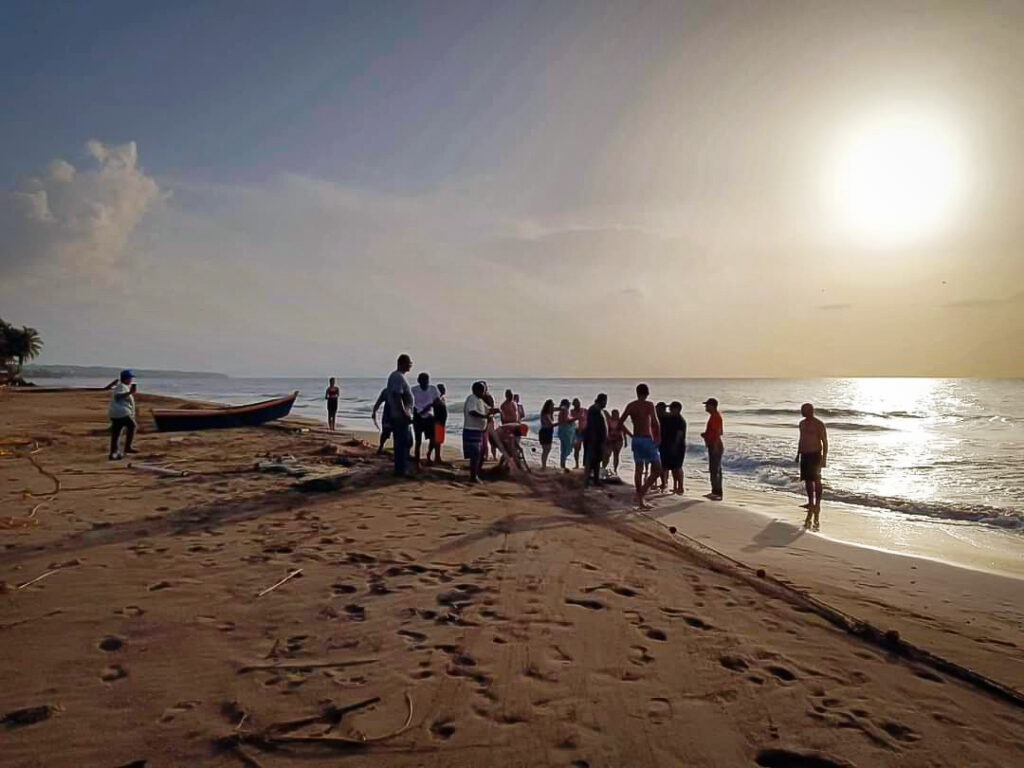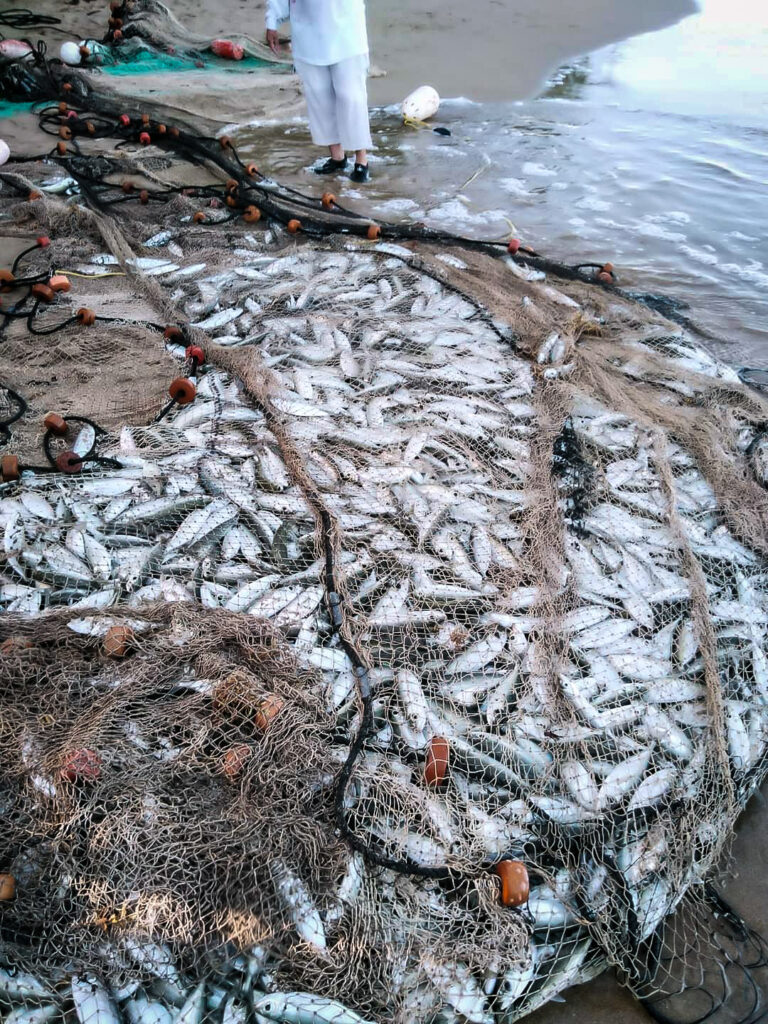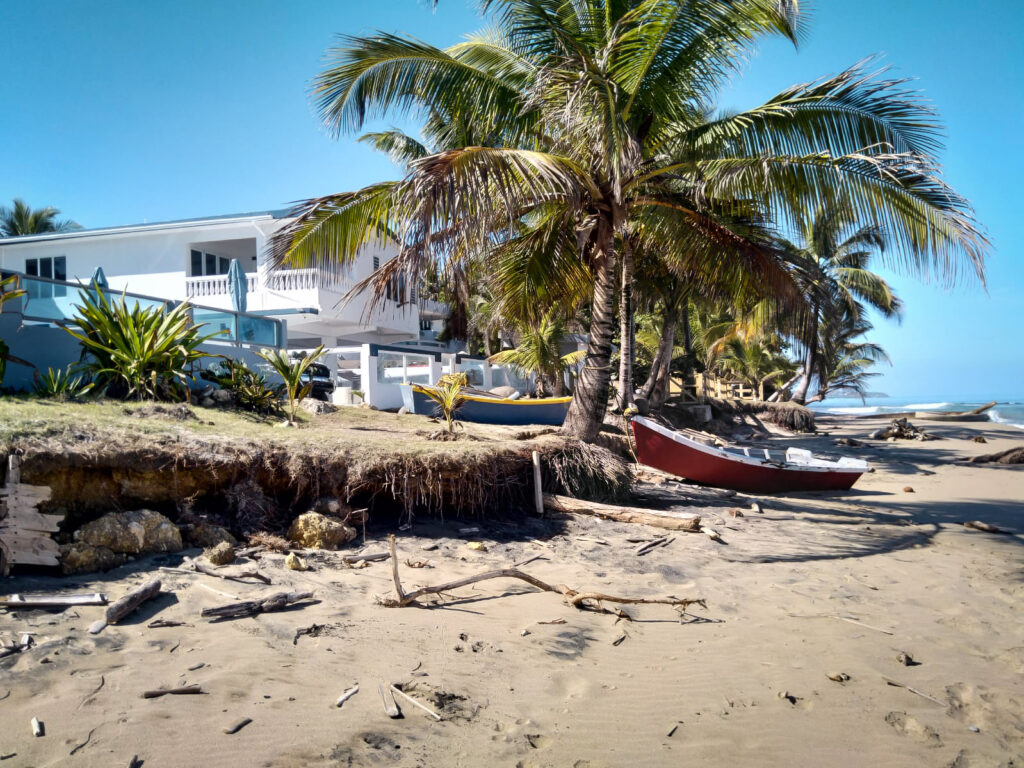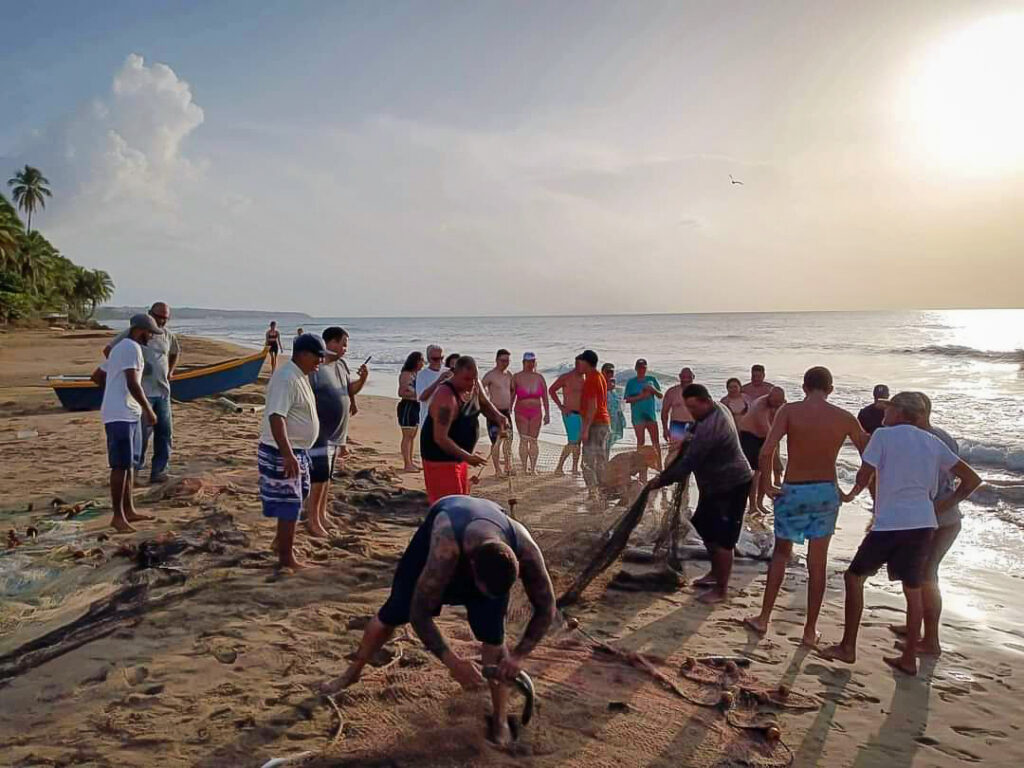Puerto Rican fishers threatened by excessive construction

AGUADA, Puerto Rico – Despite a requirement that all beaches in the island have public access, excessive construction on the shorelines of Puerto Rico has become a threat to local fishers dealing with limited access to the ocean, displacement and changes in coastal biodiversity, environmentalists and fishers say.
“Many of the accesses have been completely closed by properties,” said Joel Gonzalez, fisherman, and president of the Association of Fishers in the coastal town of Aguada. “Sometimes there is only one entrance with access to the sea in kilometers or miles of distance,” he added, which forces fishermen like him to travel longer distances, increasing their workload and cost.
And when fishers are able to access the beach, they often encounter narrow shorelines due to erosion, a phenomenon accelerated by the coastal developments, according to an Environmental Protection Agency report on the impacts of climate change on areas along the coast.

New developments being built on shorelines already impacted by coastal erosion have become an obstacle particularly for fishers who use a type of net that requires them to fish from the shore. “Without a free shoreline it’s difficult to fish with a net,” said Gonzalez. “That is one of the biggest problems in our area.”
Corruption, lack of funding and lack of oversight from the agencies, including the Permit Management Office, which is in charge of issuing construction permits, have created the perfect storm for excessive coastal constructions to continue, fishers and federal government officials said.
The role of the permits office in the rise of coastal construction was recently called into question in a high-profile case in the surfing town of Rincón where a permit was given to rebuild a pool and other recreational areas that were destroyed by Hurricane Maria in 2017. In February, a judge reversed the permit ruling that the proposed construction would privatize a beach area in violation of local laws. A witness in the case who worked at the permits office testified he had intervened directly to speed up the construction permit.
Issues with accessing the island’s waterfronts worsened when the local government passed Act 22 in 2012, exempting foreign investors from paying capital gains taxes if they relocate their main residence to the island. This has prompted many investors to buy properties around Puerto Rico’s attractive coastline, a trend that has instilled fear among locals who worry it could exacerbate the privatization of public beaches.
Many of these property owners resist allowing fishers to use the shorelines, said Jannette Ramos García, an official of Sea Grant, a program of the National Oceanic and Atmospheric Administration within the U.S. Department of Commerce.
“The problem is with gentrification, this is also part of the displacement of the locals,” he added.
In almost all of the coastal towns, areas that were traditionally for fishing are being co-opted by construction sites, said Vanessa Uriarte, director of Amigxs del Mar, an environmental organization founded in 1995.
In the municipality of Aguadilla, investors have already developed near the “Villa del Ojo” fishing village, which was destroyed by Hurricane María in 2017.
So far, developers have built a hostel and a restaurant a few miles from where the fishing village used to be, according to Victor Pagán, a lawyer helping fishermen preserve Puerto Rico’s coast. As fishers look to rebuild “Villa del Ojo,”one of the oldest fishing villages on the island, they fear investors may have an easier time obtaining permits to develop all over the shoreline, experts from the Sea Grant program at NOAA and fishers of the region said.

“The fisherman with the refrigerator doesn’t have the same capacity of the fishing village,” said Pagán. Fishing villages’ proximity to maritime zones provide fishermen easier access to the shore to dock their boats and as well as a center where they can distribute what they fish, according to Puerto Rico’s Department of Agriculture.
Without the fishing villages, fishers stand to lose part of their catch since these locations provide needed storage space. In “Villa del Ojo,” fishers have been storing their catch in one of the fishers’ homes since it was destroyed.
Coastal construction has also contributed to a decrease in the amount of seafood fishers are able to catch for human consumption, further cutting into their earnings, fishermen told the Center for Investigative Journalism in Puerto Rico. In the town of Salinas, in the southern coast, fishers have seen a loss of various marine species — including arrayao, sama, snappers, colirubia, and lobsters — after an extensive mangrove area was deforested to build vacation trailers.
These types of shoreline developments harms coastal biodiversity by “increasing the sedimentation of the reefs, altering their productivity, deforesting the mangroves, destroying the marine grasslands and reducing the spawning, feeding and mating areas of species,” said Ruperto Chaparro, an expert in coastal management and development of natural resources and director of the Sea Grant program based at the University of Puerto Rico, Mayaguez.
Edgardo Perez, a fisherman from Luquillo, a coastal town on the eastside of the island, fears that coastlines in his community will suffer the same fate due to the ongoing construction of a hotel near a wetland where fishers usually go to catch blue land crab, locally known as “jueyes,” he said.
Perez also worries about how mangrove deforestation in Punta Las Banderas, another development in Luquillo, would alter the biodiversity of an important area for fish mating.

“The developments would impact essential areas for the mating of a lot of crustaceans and fishes that have a lot of commercial value,” said Perez.
For Chaparro, it is imperative for Puerto Rico to stop excessive construction on its coast if the island officials are serious about addressing environmental threats and protecting fishermen’s livelihoods.
Fishermen from opposite coastal sides of the island, Gonzalez and Perez said they will continue fishing against all odds while waiting for the appropriate solutions from the agencies that are responsible to protect fishing villages from coastal construction.
But moreover, Chaparro highlighted Puerto Rico’s beaches and coasts must “be safeguarded for future generations.”
Claudia Rivera Cotto is completing a masters degree in investigative journalism at the University of Missouri. She works as a teaching assistant for cross-cultural journalism as well as research assistant for the Watchdog Writers group. Reach her at claudia.riveracotto13 [at] gmail [dot] com and on Twitter at @claudiam_rivera.